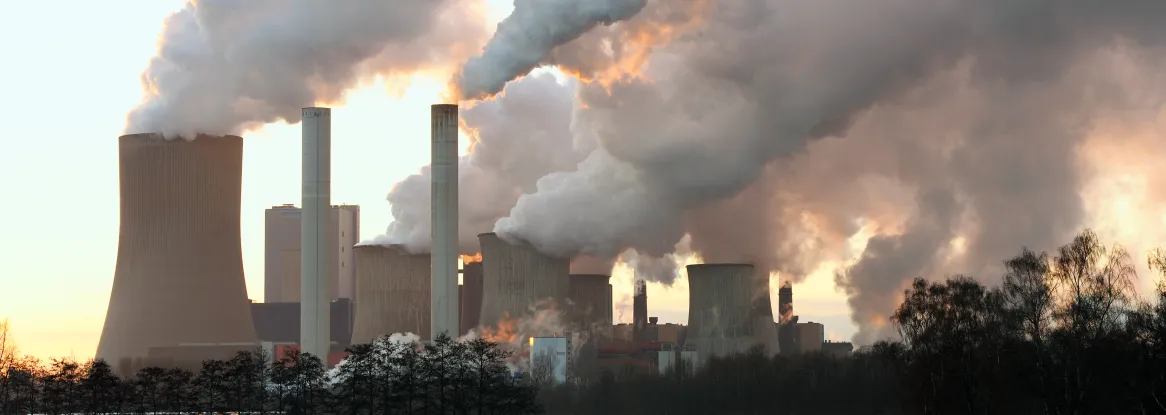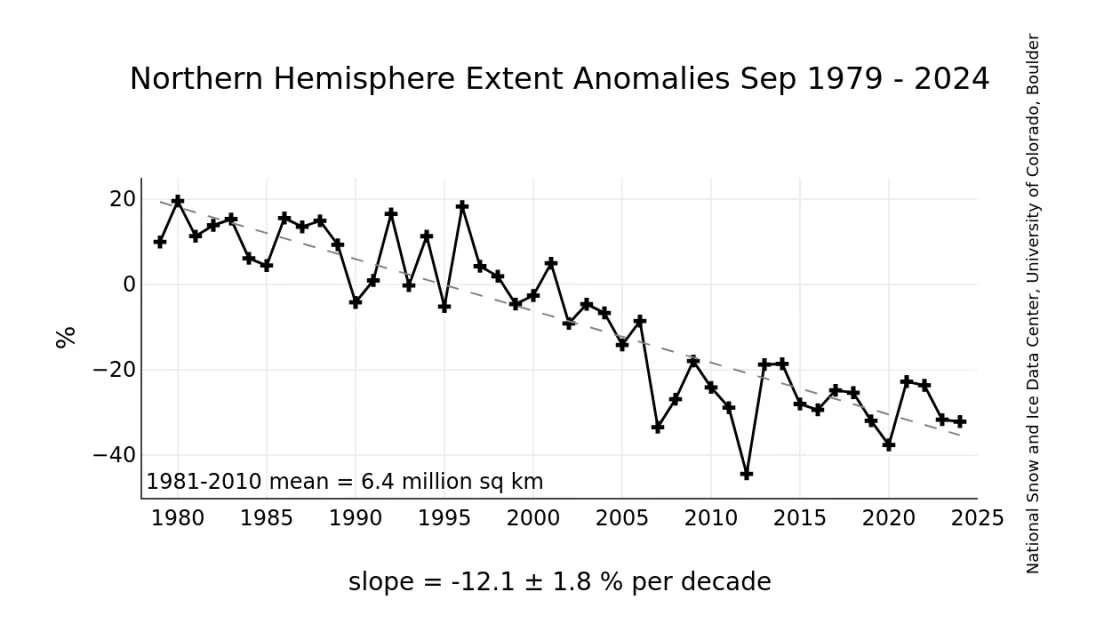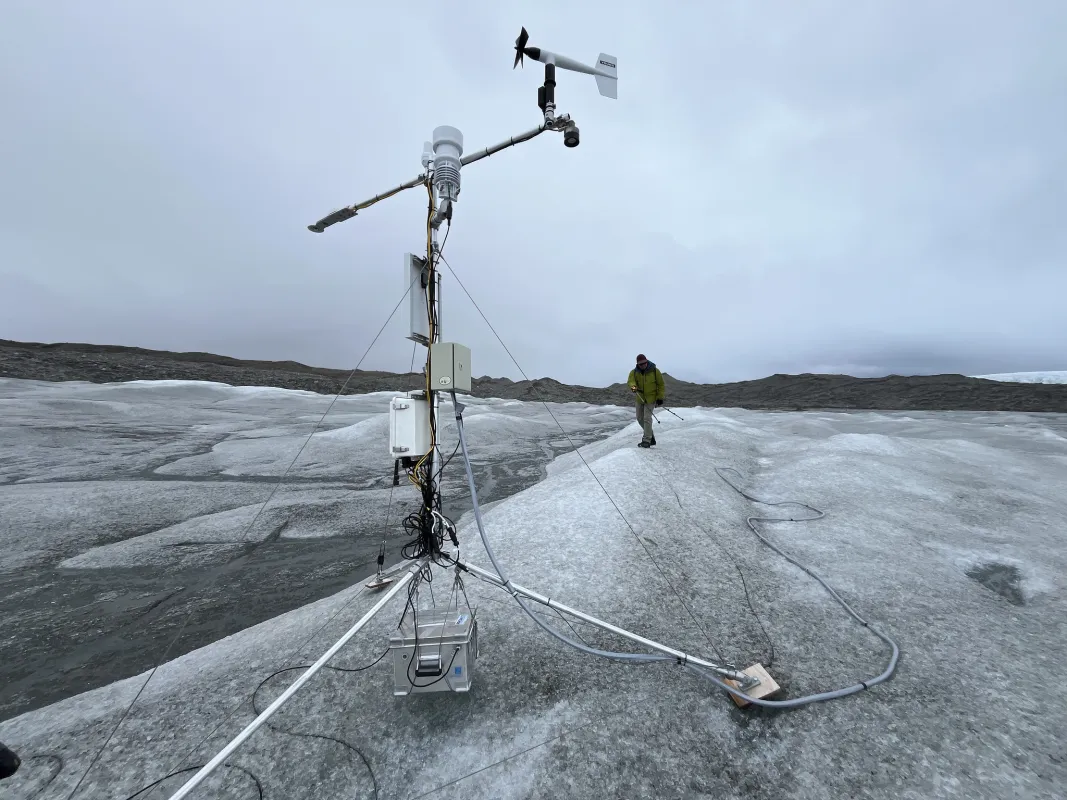From the National Snow and Ice Data Center and the Cooperative Institute for Research in Environmental Sciences, University of Colorado Boulder
Sea ice is one of the key indicators of planet-wide warming in response to greenhouse gas emissions, and its decline is contributing strongly to the accelerated warming of the Arctic and surrounding lands. It also has significant and direct consequences for the United States, because much of the Alaskan coast is impacted by sea ice conditions for at least some of the year. Sea ice affects U.S. fisheries, resource extraction (oil, gas, etc.), national security (Naval submarines and surface vessels), and local communities (coastal erosion, safety in transportation, and hunting).
In July and August 2025, two new federal documents were released that have implications for how climate change impacts are assessed in the United States:
- Department of Energy (DOE) Report: A Critical Review of Climate Science Evidence and Greenhouse Gas Impacts (July 2025), which evaluates the role of greenhouse gases in U.S. climate trends and includes limited references to sea ice and cryosphere processes.
- Environmental Protection Agency (EPA) Proposal: Rescission of the 2009 Endangerment Finding (August 2025), which reexamines the legal and scientific basis for greenhouse gas emission standards, with relatively little direct discussion of polar science.
NSIDC and its supporting research team remain committed to reporting factual observations and well-documented processes that link the current warming of the planet to changes in the environment, particularly the polar environment. We welcome a range of perspectives on these topics and are open to well-founded discussions that seek to reshape the view of how polar ice is responding to climate change and why. The recent DOE and EPA documents do not include several irrefutable scientific findings, and in general do not reflect the information that Earth’s polar regions are providing to us with regard to the rapid climate change of the past few decades. NSIDC recommends that the documents be expanded upon and reconsidered with additional evidence from the research record, described below.
Arctic Sea Ice
DOE Report
- The DOE report mentions “sea ice” a few times, including four in the section on planetary albedo (8.4). While acknowledging the importance of sea ice for albedo, the treatment is limited and does not discuss broader implications of sea ice change, such as intense pace of warming of the Arctic, oceanographic circulation changes, heat and moisture flux changes, especially in autumn.
- One of the only primary references cited is England et al. (2025), which notes little trend in Arctic sea ice since 2007. Though this is accurate in a statistical sense, it misses important context; an on-average flat trend over ~20 years at already low ice levels is consistent with natural variability and does not negate the long-term role of CO₂ forcing, as is noted in England et al. (2025), as well as in other research (e.g., Notz and Stroeve, 2016). Over the past 45+ years, Arctic sea ice extent, thickness, and volume have all declined significantly (Kwok, 2018; Lindsay and Schweiger, 2015).
- The DOE report states Arctic sea ice extent has declined ~5 percent since 1980. This is incorrect. It appears that this refers to a percent trend per decade, not total change since 1980. Also, it does not clarify that this refers to the annual average. NSIDC data show a ~4.4 percent decline per decade (relative to the 1981-2010 average) in annual average extent (18.7 percent total decline since 1980). However, the annual average does not capture the full scale of the change because there is strong seasonality in sea ice extent and trends. The September minimum has declined 12.1 percent per decade (relative to the 1981-2010 average), representing a 46 percent loss in summer sea ice (Fetterer et al., 2017). Moreover, sea ice extent (surface cover of ice greater than 15%) does not consider the net volume change of Arctic ice. Ice thickness and volume have dropped by about 75 percent since 1980 (Kwok, 2018; Schweiger et al., 2019).
- By citing only one recent paper, the report omits a large body of research documenting the mechanisms, variability, and impacts of Arctic sea ice decline. Synthesis assessments such as Arctic Monitoring and Assessment Programme (2024) and the Intergovernmental Panel on Climate Change (IPCC) Special Report on the Ocean and Cryosphere (2019) provide comprehensive and critical context that is missing here.
EPA Proposal
- The EPA's 2009 Endangerment Finding mentioned Arctic sea ice as part of the scientific evidence demonstrating that greenhouse gases threaten public health and welfare. Sea ice is not mentioned in the current EPA proposal. The focus is on legal interpretation rather than updated climate science.
- The scarce mentions of sea ice are notable because, at the time of the 2009 endangerment finding, Arctic sea ice had just reached a record low in 2007 (Comiso et al., 2008). Subsequent years have included 2012, the current record low, and several additional minima exceeding all pre-2007 extents (Parkinson and Comiso, 2013).
- These records, along with continued low sea ice extents, reinforce the robustness of the original scientific findings. NSIDC data continue to track these changes on our Sea Ice Today site, where researchers also analyze the data and report on current conditions.
Greenland Ice Sheet
DOE Report
- Greenland receives limited discussion. However, observations since 2002 (Velicogna and Wahr, 2006; McMillan et al., 2016) show persistent and accelerating ice mass loss, with 2012 marking a record year for surface melt and total mass loss (Tedesco et al., 2013).
- Summer surface melting on the Greenland Ice Sheet perimeter has continued to far exceed rates seen prior to 2000. Melting of the surface has now reached Greenland’s Summit Station area, the highest elevation on the ice sheet, on several occasions, and in 2021 an unprecedented observation of rainfall occurred there.
- Greenland changes are highly relevant to projections of global sea-level rise, an area where continued monitoring provides essential context.
EPA Proposal
- The EPA's 2009 Endangerment Finding included the melting of the Greenland ice sheet as a significant impact of climate change. Greenland is not explicitly mentioned in the current proposal. The EPA proposal focuses on legal grounds for reassessing greenhouse gas standards.
- Since 2009, Greenland has in fact experienced sustained annual mass loss, documented by satellite and airborne measurements (e.g., McMillan et al., 2016). These losses remain a major contribution to global sea-level rise, underscoring the importance of including updated polar science in policy discussions.
Antarctic Sea Ice
DOE Report
- Antarctic sea ice is briefly mentioned, referencing IPCC Sixth Assessment Report conclusions of high variability and little long-term trend through 2020. While accurate at the time, this framing does not acknowledge the dramatic downturn in Antarctic sea ice that began in 2016, culminating in record lows in 2023 and 2024 (Hobbs et al., 2024; Purich and Doddridge, 2023).
- Whether recent change represents a long-term regime shift or extreme variability remains under study, but the events are scientifically significant and should not be omitted.
- Antarctic sea ice and landfast ice are increasingly recognized as critical in controlling glacier flow and calving, and thus there are implications for ice sheet contributions to sea level rise. For example, sea ice suppresses wave action that can flex and destabilize ice shelves (Massom et al., 2018). Reduced fast ice cover has been linked to glacier acceleration in regions such as the Larsen B embayment (Khazendar et al., 2015).
EPA Proposal
- Antarctic sea ice is not included in the EPA proposal.
- New studies (Hobbs et al., 2024; Purich and Doddridge, 2023; Ochwat et al., 2024) highlight Antarctic sea ice as a key component of cryosphere–climate interactions, with implications for US coastlines. Sea ice and coastal ice stabilize the Antarctic ice sheet. This is critically important because Antarctic ice sheet losses disproportionately drive sea-level rise in the Northern Hemisphere (Mitrovica et al., 2009).
Scientific Context/Summary
DOE Report
- Because of the report’s reliance on a single recent study (England et al., 2025), it does not include decades of published literature and synthesis work that contextualize variability within a strong long-term decline. Moreover, the concluding remarks of the England paper make it clear that the authors believe that greenhouse-driven warming is largely responsible for the general downward trend over the past 5 decades, despite the recent slowing of summertime ice loss - a slowing that the England et al. study specifically states is not inconsistent with climate warming trends.
- Inclusion of synthesis assessments such as AMAP (2024) and the IPCC Cryosphere Report (2019) would provide a stronger and more comprehensive treatment. These reports underscore the continuing decline of the world’s ice, and its potential impacts on climate, sea level rise, ocean circulation, and water resources.
EPA Proposal
- The EPA proposal characterizes the 2009 findings as based on “unreasonable analysis” of the scientific record at that time. However, evidence available then—including record Arctic sea ice loss in 2007 (Comiso et al., 2008) and record Greenland melt in 2007 (Tedesco et al., 2008)—already pointed to significant climate impacts.
- Since 2009, continued record-setting events and persistent mass loss reinforce, rather than weaken, the scientific foundation for greenhouse gas regulation.
Conclusion
NSIDC’s role is to provide accurate, up-to-date information on the Earth’s frozen regions. Situating DOE and EPA discussions within the broader scientific record makes clear that Arctic and Antarctic sea ice, as well as the Greenland Ice Sheet, remain critical indicators of climate change. These polar changes continue to respond to greenhouse gas emissions, providing compelling evidence of the risks posed by further, unregulated emissions and their consequences for U.S. national security, economy shifts in extreme weather that are having devastating impacts on communities across the U.S. and world, and our collective ability to plan for the impacts to save lives and critical infrastructure.
References
Bamber, J., Rivam R. 2010. The sea level fingerprint of recent ice mass fluxes. The Cryosphere. https://doi.org/10.5194/tc-4-621-2010.
Comiso, J.C., Parkinson, C.L., Gersten, R. and Stock, L., 2008. Accelerated decline in the Arctic sea ice cover. Geophysical Research Letters, 35(1), https://doi.org/10.1029/2007GL031972.
Fraser, A.D.,et al., 2012. East Antarctic landfast sea ice distribution and variability, 2000–08. Journal of Climate, 25(4), 1137-1156, https://doi.org/10.1175/JCLI-D-10-05032.1.
Fraser, A.D., 2021. Eighteen-year record of circum-Antarctic landfast-sea-ice distribution allows detailed baseline characterisation and reveals trends and variability. The Cryosphere, 15(11), 5061-5077, https://doi.org/10.5194/tc-15-5061-2021.
Hobbs et al, 2024.Observational evidence for a regime shift in summer Antarctic sea ice. J. Climate, https://doi.org/10.1175/JCLI-D-23-0479.1.
Khazendar et al. 2015. The evolving instability of the remnant Larsen B Ice Shelf and its tributary glaciers. Earth and Planetary Science Letters, https://doi.org/10.1016/j.epsl.2015.03.014.
Kwok, R. 2018. Arctic sea ice thickness, volume, and multiyear ice coverage: losses and coupled variability (1958–2018). Environmental Research Letters, 13: 105005, https://doi.org/10.1088/1748-9326/aae3ec.
Massom, R.A.et al. 2018. Antarctic ice shelf disintegration triggered by sea ice loss and ocean swell. Nature, 558(7710): 383-389, https://doi.org/10.1038/s41586-018-0212-1.
McMillan, M., Leeson, A., Shepherd, A., Briggs, K., Armitage, T.W., Hogg, A., Kuipers Munneke, P., van den Broeke, M., Noël, B., van de Berg, W.J. and Ligtenberg, S., 2016. A high‐resolution record of Greenland mass balance. Geophysical Research Letters, 43(13): 7002-7010, https://doi.org/10.1002/2016GL069666
Notz D., and J. Stroeve. 2016. Observed Arctic sea-ice loss directly follows anthropogenic CO2 emission. Science, 354(6313): 747-750, https://doi.org/10.1126/science.aag2345.
Ochwat et al., 2024. Triggers of the 2022 Larsen B multi-year landfast sea ice breakout and initial glacier response, The Cryosphere, https://doi.org/10.5194/tc-18-1709-2024.
Parkinson, C.L. and Comiso, J.C., 2013. On the 2012 record low Arctic sea ice cover: Combined impact of preconditioning and an August storm. Geophysical Research Letters, 40(7), 1356-1361, https://doi.org/10.1002/grl.50349.
Purich and Doddridge, 2023. Record low Antarctic sea ice coverage indicates a new ice state. Nature Comm. Earth Environ., https://doi.org/10.1038/s43247-023-00961-9.
Schweiger, A.J., K.R. Wood, and J. Zhang. 2019. Arctic Sea Ice Volume Variability over 1901–2010: A Model-Based Reconstruction. Journal of Climate, https://doi.org/10.1175/JCLI-D-19-0008.1.
Serreze, M.C., and R.G. Barry. 2011. Processes and impacts of Arctic amplification: A research synthesis. Global and Planetary Change, 77: 85-96. https://doi.org/10.1016/j.gloplacha.2011.03.004.
Teder, N.J. et al., 2025. Large-scale ice-shelf calving events follow prolonged amplifications in flexure. Nature Geoscience, 1-8. https://doi.org/10.1038/s41561-025-01713-4
Tedesco, M., Serreze, M. and Fettweis, X., 2008. Diagnosing the extreme surface melt event over southwestern Greenland in 2007. The Cryosphere, 2(2): 159-166, https://doi.org/10.5194/tc-2-159-2008.



